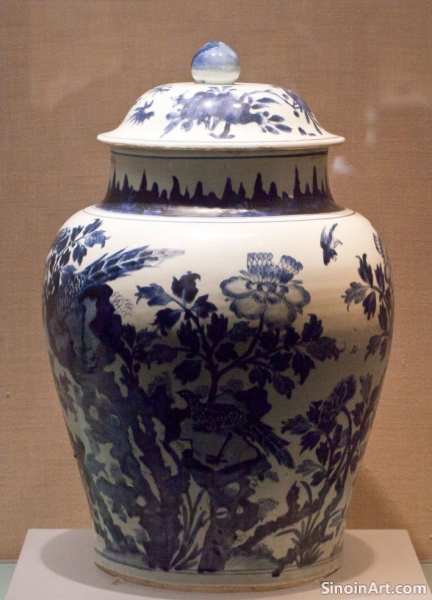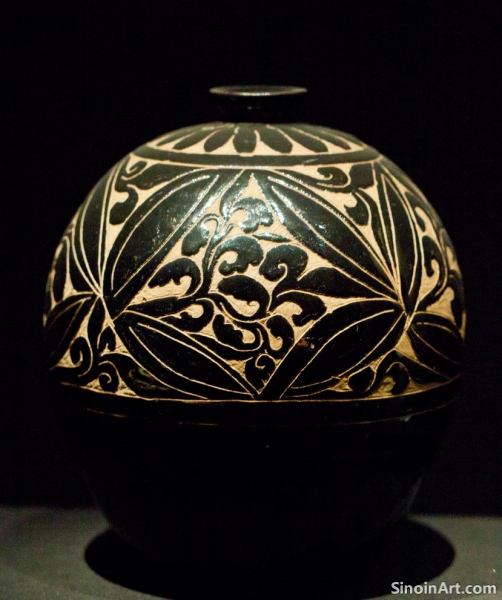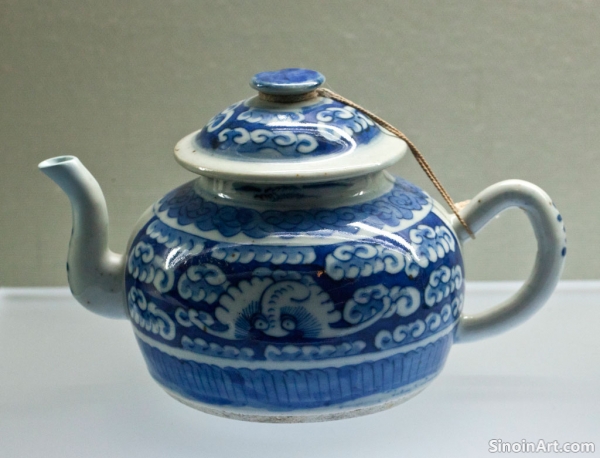The Development of the Cobalt Underglaze Technique
|
The Yuan Dynasty saw a pivotal development in ceramic technology: the mastering of the cobalt underglaze technique. This technique, which involves painting designs onto the porcelain body with cobalt oxide before applying the glaze, was crucial for the emergence of blue and white porcelain. The development of the cobalt technique was a major technical accomplishment.  The use of cobalt oxide as a coloring agent was not new; however, the Yuan potters perfected the method of applying the pigment and firing it to achieve a deep, vibrant blue color. The Yuan potters learned how to work with cobalt to create stunning and lasting works of art. This technique proved itself very stable in the kiln.  The sourcing of cobalt was also crucial for this development. Much of the cobalt used during the Yuan period came from Persia, highlighting the importance of international trade for ceramic innovation. The reliability of supply played a huge role in the growth of the blue and white industry.  The cobalt underglaze technique allowed for the creation of intricate designs and the precise control of color. This allowed for a much higher degree of design freedom and artistic experimentation. This innovation opened up new possibilities in terms of decoration. The enduring legacy of the cobalt underglaze technique lies in its impact on later Chinese ceramics and its continued use around the world. It remains a fundamental part of many ceramic traditions around the world to this day. The mastery of this technique is a pivotal event in ceramic history. |
Tag : Cobalt underglaze, Yuan Dynasty, Blue and white, Ceramic technique, Chinese porcelain
Related information
- The Scientific Analysis of Yuan Dynasty Porcelain: New Insights into Materials and Techniques
- Yuan Dynasty Porcelain as a Source of Inspiration for Contemporary Design
- The Influence of the Mongol Empire on Yuan Ceramics
- Yuan Dynasty Porcelain as a Reflection of Mongol Rule and Identity
- Understanding the Rarity and Value of Yuan Dynasty Porcelain
This article explores the use of scientific analysis in studying Yuan Dynasty porcelain, highlighting how techniques like X-ray fluorescence, neutron activation, and microscopy provide new insights into the materials, production techniques, and provenance of these important historical objects.
This article explores the enduring influence of Yuan Dynasty porcelain on contemporary design, highlighting its inspiration for patterns, color palettes, forms, and shapes across a variety of disciplines including fashion, graphic design and product design.
The Yuan Dynasty was established by the Mongol Empire, and this period of Mongol rule had a subtle yet significant impact on the development of Chinese ceramics, particularly in terms of its trade networks and the cultural exchange that occurred during this period, and the influence of the Mongol Empire is visible in various aspects of the production and design of Yuan pottery.
This article analyzes Yuan Dynasty porcelain as a reflection of Mongol rule and identity, exploring how the blending of Chinese and Mongol cultural elements shaped the forms, designs, and decorative motifs of the era.
This article explains the rarity and high value of Yuan Dynasty porcelain by highlighting factors such as the short duration of the dynasty, technical difficulties in production, and its significant historical and cultural importance.